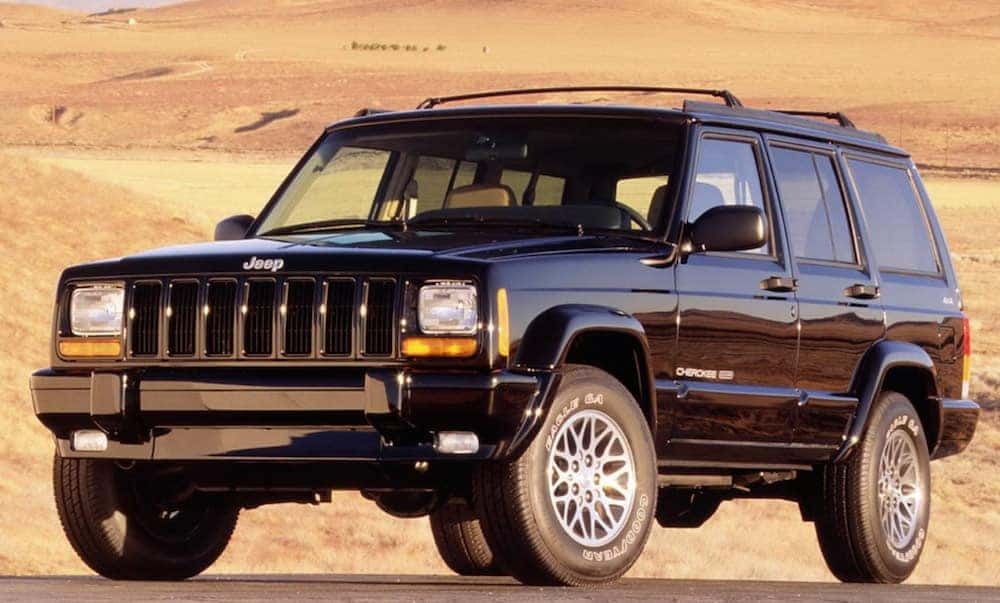When Shopping for an XJ Cherokee Which Year Is Best?
Oct 2nd 2025

The Jeep Cherokee XJ (1984–2001) remains a favorite for off-roaders, overlanders, and mechanics who love a simple, durable rig. This guide breaks down the strengths and weaknesses across model years so you can choose the best XJ for your needs.
Why model year matters
Over its long run, the XJ received mechanical, electrical, and cosmetic updates. Some buyers prioritize rugged simplicity and ease of maintenance, while others want the most modern interior and safety features. Year-to-year differences affect parts availability, repair costs, drivability, and long-term reliability.
Quick overview — the common consensus
Popular choices among the community usually fall into three buckets:
- 1999 — often called the “pinnacle year” for combining the refreshed late-’90s styling with the reliable distributor ignition and a stronger 8.25" rear axle.
- 1997–1998 — modern interior and improved axles, still with the simpler distributor ignition system.
- 1991–1995 — praised for simplicity and robustness (Renix era moving into the High Output engine), ideal for DIY mechanics.
Year-by-year deep dive
1987–1990 — Early 4.0L era
Key facts: 1987 introduced the 4.0L inline-six and the AW4 automatic transmission. These early 4.0s are strong, torquey, and mechanically simple.
Pros: Simple electronics, rugged drivetrain, great for restoration or off-road builds.
Cons: Dated interiors, fewer modern safety features, and some parts may be harder to find than later HO-era components.
1991–1995 — Renix → High Output (HO) sweet spot
Key facts: Transition to higher-output 4.0L variants and improved parts availability over earlier Renix systems.
Pros: Excellent reliability, easy to maintain, retains distributor-based ignition that’s inexpensive and DIY-friendly.
Cons: Interiors still largely classic, fewer modern comfort and safety features.
1996 — The transition year
Key facts: First year for OBD-II diagnostics and the driver’s airbag. Minor interior updates begin to appear.
Pros: Easier diagnostics with OBD-II tools; safer with driver airbag.
Cons: Contains some one-off parts—replaceables that are unique to this year which may complicate repairs.
1997–1999 — refreshed styling and stronger axles
Key facts: A major refresh in 1997 modernized the interior and exterior. Rear axle upgrades (8.25" on many models) improved durability for heavier use.
Pros: Best blend of comfort and mechanical reliability; 1999 frequently called the “pinnacle year.”
Cons: Typically higher prices for clean examples compared to earlier, more worn rigs.
2000–2001 — the last years (caution advised)
Key facts: Introduced distributorless coil-on-plug ignition. Many of these years used a cylinder head casting (commonly referred to as 0331) that is prone to cracking.
Red flag: The 0331 head cracking problem and the more complex ignition system make many buyers avoid 2000–2001 models unless the head has already been replaced with a more reliable casting.
Pros: Newest XJs, sometimes lower mileage.
Cons: Potentially expensive repairs and more complex electronics for DIYers.
Side-by-side comparison
| Year Range | Highlights | Downsides | Who it's for |
|---|---|---|---|
| 1987–1990 | First 4.0L, AW4 auto, rugged mechanicals | Dated interior, scarce certain parts | Purists, simple builds |
| 1991–1995 | HO engine, great reliability, distributor ignition | Lacks airbags until 1996 | Reliability-focused buyers, DIYers |
| 1996 | OBD-II, driver airbag, interior updates | One-off components | Budget buyers who want diagnostics |
| 1997–1999 | Modernized interior/exterior, stronger axles | Higher market value for clean examples | Daily drivers who want comfort + durability |
| 2000–2001 | Newest styling/features | 0331 head cracks, coil-on-plug complexity | Avoid unless head replaced |
Use this table to weigh the tradeoffs: mechanical simplicity vs. modern features, lower repair costs vs. better comfort and safety.
Buying checklist — condition matters more than year
Even the "best" year can be a poor purchase if the specific vehicle is rusty, abused, or poorly maintained. Prioritize condition over model year by running through this checklist before buying:
- Check floors, pinch welds, rocker panels, and wheel arches.
- Inspect frame rails and suspension mounting points for rot.
- Listen for head knock, oil leaks, and coolant leaks.
- For 2000–2001 models, ask specifically about head casting and any previous head jobs.
- Check transfer case, front and rear differentials, and transmission for leaks or noises.
- Verify axle type (8.25" rear is preferred in later models).
- Test OBD-II functionality on 1996+ models; scan for stored codes.
- Confirm ignition type — distributor or coil-on-plug — so you know replacement costs.
Pro tip: Ask the seller for maintenance records, prior repair invoices (especially head work), and proof of rust repair if applicable. A pre-purchase inspection by a mechanic familiar with XJs is worth the price.
Final verdict — the short answer
If you want one quick recommendation:
- 1999 — widely regarded as the best all-around year: late-model comfort and styling with the dependable distributor ignition and a stronger rear axle.
- 1997–1998 — nearly as good and often more available; great balance of modern comforts and mechanical simplicity.
- 1991–1995 — the pick for simplicity-first buyers and those who want the easiest long-term ownership from a DIY perspective.
- 2000–2001 — avoid unless you can verify the cracked-head issue has been addressed or you are comfortable with a potential costly repair.
Remember: condition always beats year. A well-kept, rust-free XJ from a less-desirable year will generally be a better buy than a rust bucket of the “best” year.
